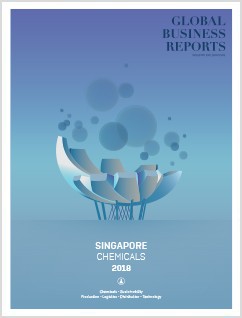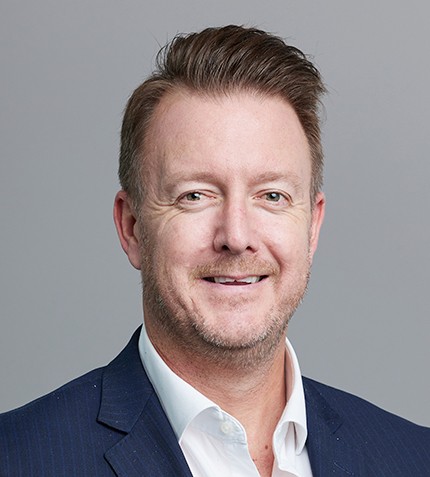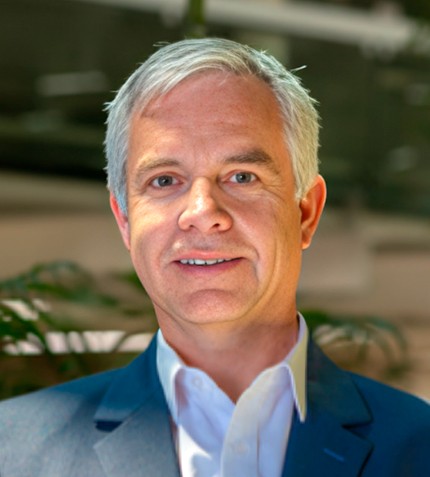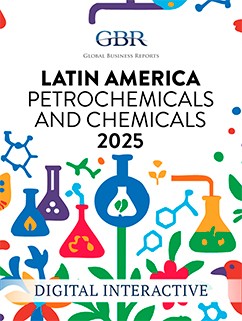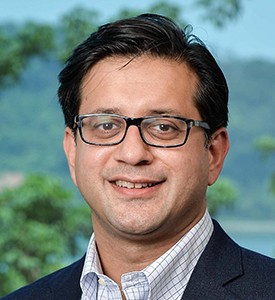
"A bag of seed in the US is comprised of some of the most sophisticated technology that has ever been developed. The seedcare technologies available in the ASEAN and South Asia region today are not as advanced in comparison; but there is far more advanced, user-friendly and environmentally sustainable technology now available, and we are bringing it to Asia and making it widely available."a
RELATED PUBLICATION
ARTICLES FROM THIS PUBLICATION
- Singapore’s Chemicals Sector is Undergoing a Transformation
- For a Rainy Day: Singapore targets water self-sufficiency
- Manpower Constraints a Persistent Burden for Industry in Singapore
- Singapore’s Chemical Producers: Feeding Asia’s Appetite
- Distribution: Streamlining the Channels
- The Brave New World of Chemicals
- Prosperity or Penury – Singapore's Petrochemicals Industry Faces Challenges to Re-invent Itself
Saad Haroon
HEAD OF SEEDCARE APAC, SYNGENTA
Can you introduce our readers to Syngenta’s Seedcare Institute?
Syngenta’s Seedcare Institute lies within the Seedcare business, and its structure and broad strategy is defined by three areas: the product portfolio, the application and the services. Our product portfolio is uniquely developed for application on seeds. So much expertise and targeted research is required to develop products for seed application because seeds are dormant living organisms that age, are sensitive, and can react to whatever substance you put on them.
We invest in developing the safest and most efficient applications for our products. Firstly, we need to ensure that our products are compatible with each genetic, but we also need to consider how the environments our products face during their lifetime may affect them. Rural transportation presents a challenge, as there is a lot of abrasion to the seed surface, so we need to ensure that our products are sticking to the seed surface. We also need to ensure that our products are visually very clear, in order to ensure that people can easily differentiate between a treated and untreated seed. In the Seedcare Institute, we use not only our deep understanding of seed biology and chemistry, but also engineering, to train our customers how to correctly apply our products. We make sure that our customers are aware of how to get the most value from our products, and how to use them in an environmentally conscious manner. Finally, in the service area, we ensure demand creation with our customers, and with our customers, by creating marketing tools and videos.
What have been the recent advancements in seed technology?
Seed treatment has been around in some form throughout the history of human agriculture, beginning with the Egyptians in 2000 BC using onion sap to coat their wheat before planting it.
In recent years there has been significant advancement in seed technology. In many countries, seeds used in large scale agriculture today are the result of very complex technology: for example, a corn seed in the US has 10-15 technologies inside it- for example, possibly seven genetically-modified traits, one or two native traits and up to six active ingredients from seed treatments. A bag of seed in the US is comprised of some of the most sophisticated technology that has ever been developed.
The seedcare technologies available in the ASEAN and South Asia region today are not as advanced in comparison; but there is far more advanced, user-friendly and environmentally sustainable technology now available, and we are bringing it to Asia and making it widely available.
How are stakeholders allowing for a sustainable approach towards Seedcare?
Seedcare is in general a very environmentally-friendly approach, primarily due to its targeted application. While for insecticides and fungicides spray for example, a full spray of a hectare is typically around 10,000 meter squared, for seed treatment you do not expose more than 50 meter square.
Governments, agriculture extension services and institutes are very supportive of promoting seed treatments, and the Australian market is very knowledgeable about seed treatment already. In ASEAN we can be more knowledgeable about seed treatments and their benefits. Too often seed treatments are not well understood, which undermines a really useful tool that the industry has.
Are you seeing ASEAN moving to more of a cohesive regulatory framework (for seed treatment technologies)?
The regulatory framework in ASEAN will continue to improve and evolve. This will be achieved through engagement and bringing the information that we have to the relevant authorities. We do not find that governments have dogmatic views; they listen to differing views, and we know that the onus is on us as seed treatment businesses to present our information to governments in an objective manner. They care deeply about both sustainability and profitability, and in making farmers more efficient and productive.
What is your future vision for the Institute in APAC?
There is huge potential for bringing our expertise to growers in APAC, since technology adoption in agriculture in the region still has a long way to go. While corn is treated across APAC, other crops such as rice are lagging behind. For example, there are approximately 35 million hectares of rice in ASEAN countries, and only one million hectares of this is treated with seed treatment technology. There is much to be gained for countries and growers across APAC, and seed treatment technology is critical for yield increase in the future. The seed treatment market is still in its infancy. We would be overjoyed to see more companies entering the market here in the coming years to support its development. We are playing our part by launching Seedcare Institutes in Australia, Japan and India over the course of the next 18-24 months and expanding our China institute.




